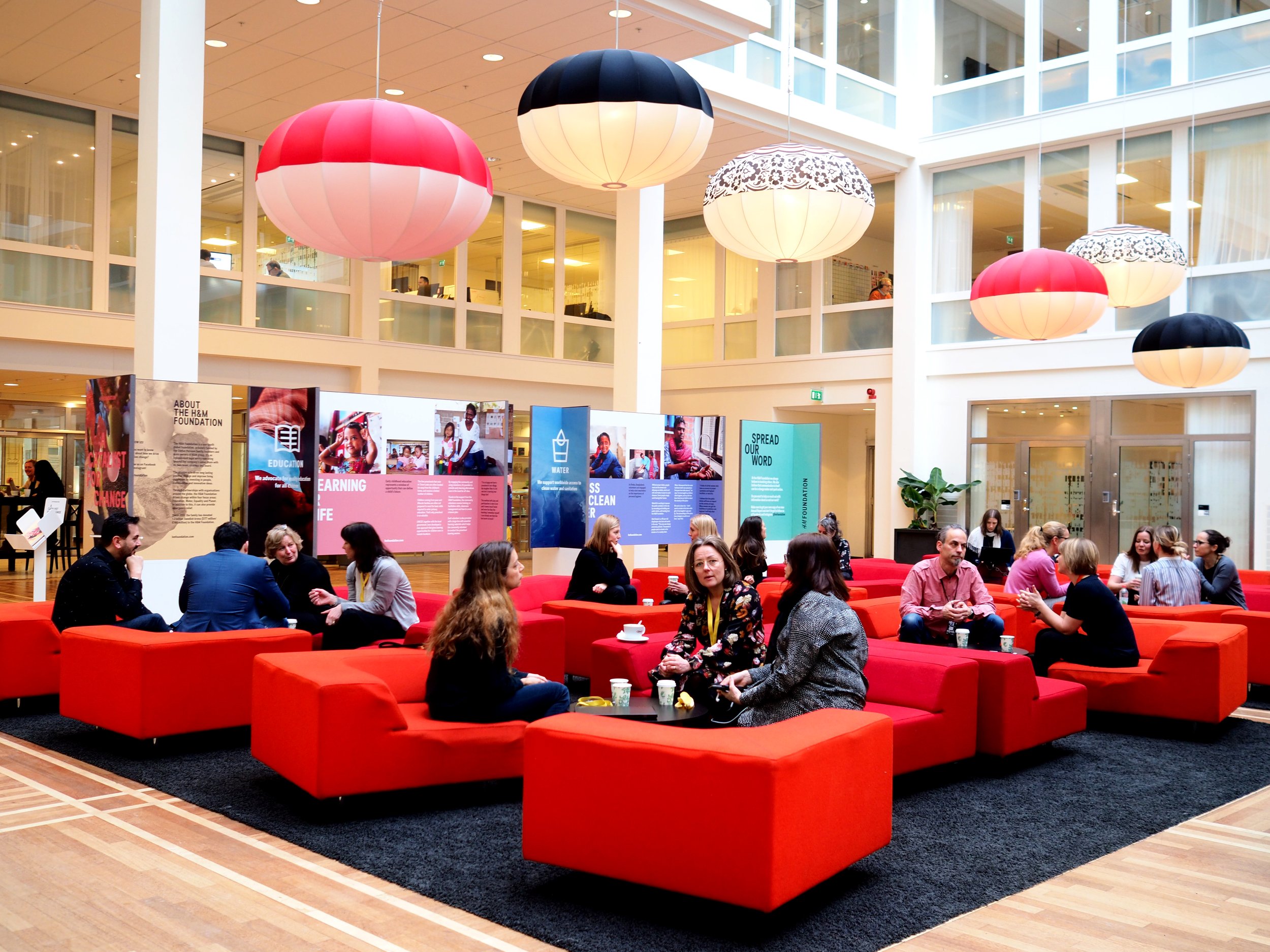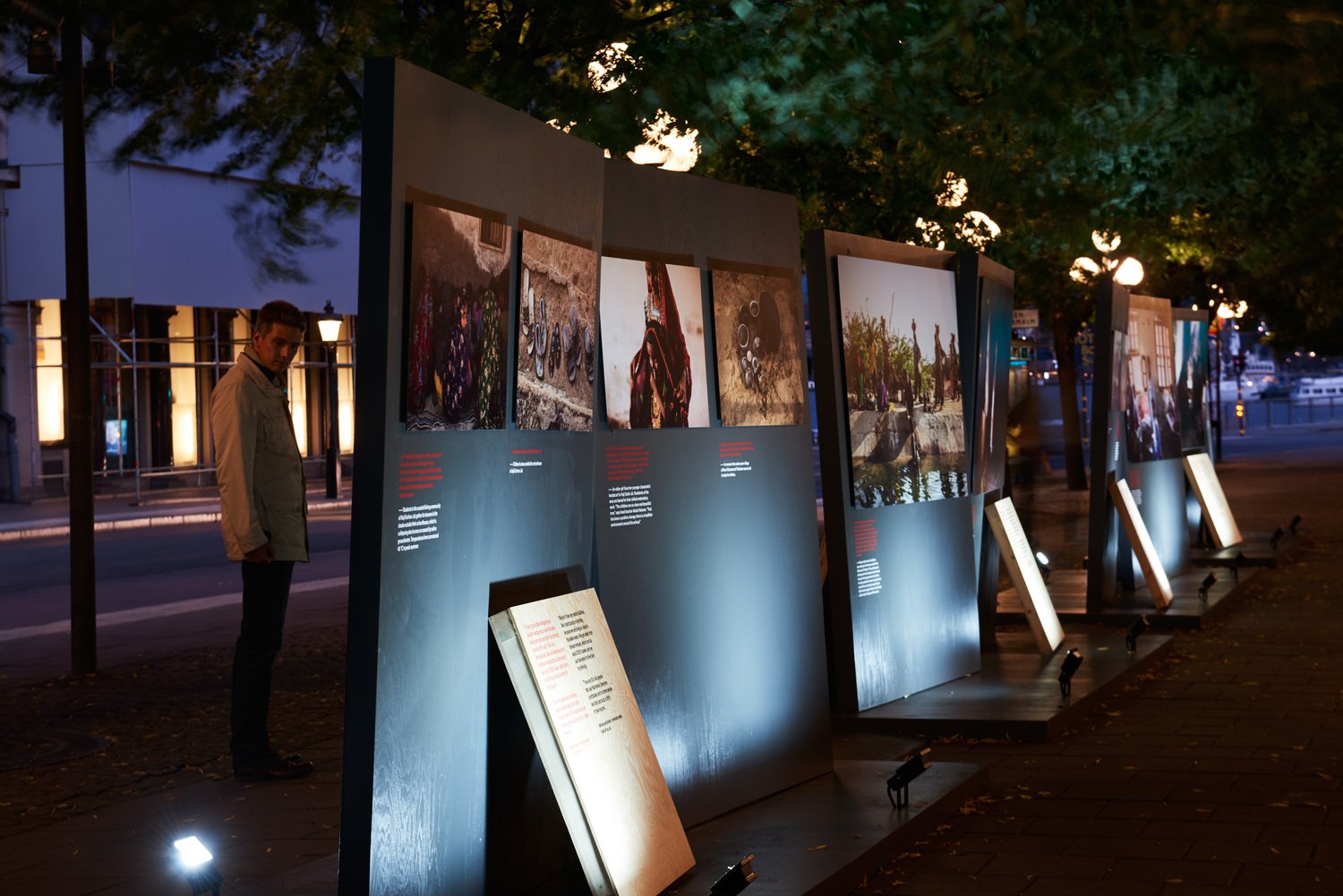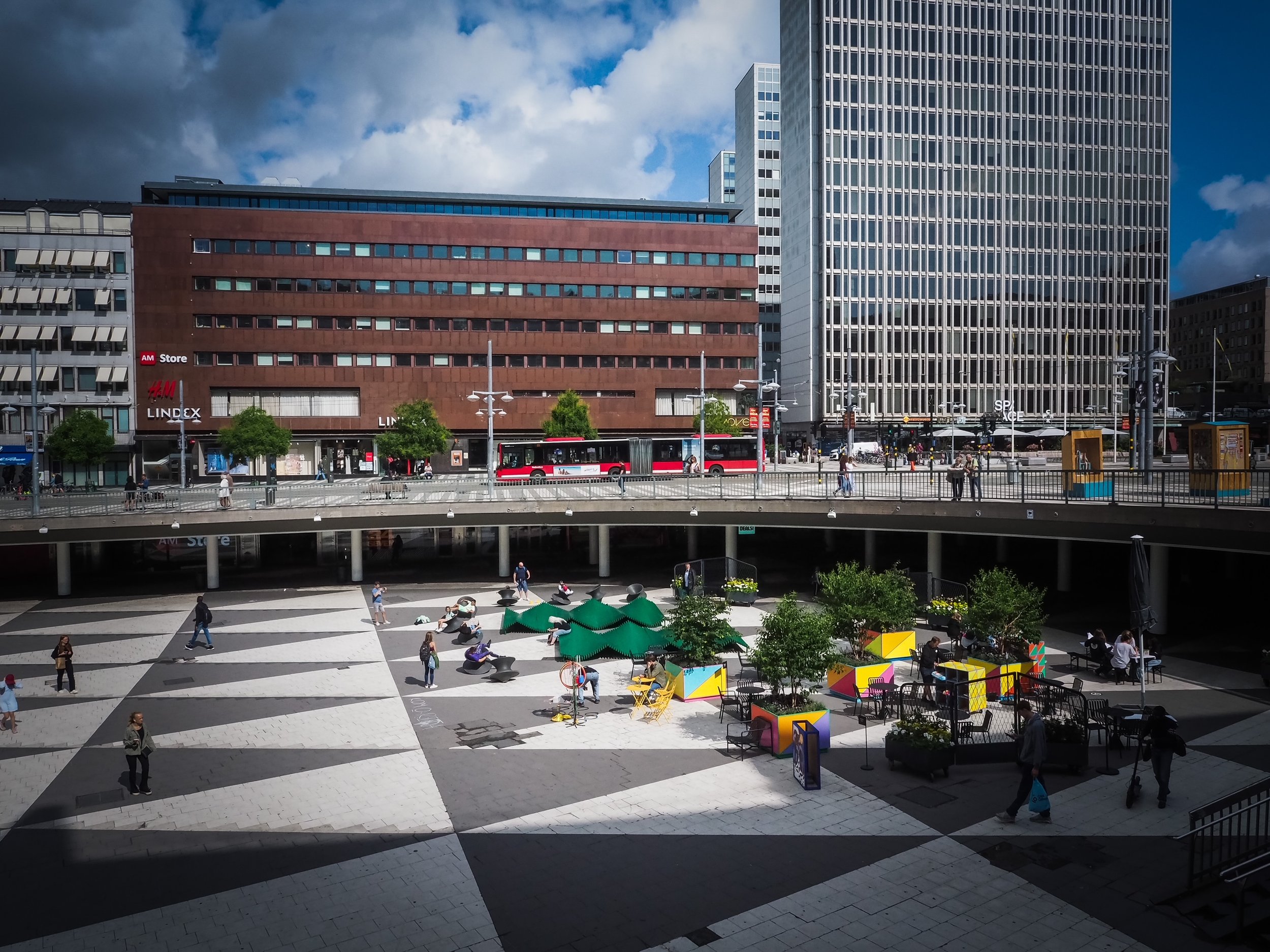OPINION: Dare to Sail! Let’s talk about Learning Spaces
DARE TO SAIL: By applying the principles of Blue Ocean Strategy to learning spaces, facilitators can break free from competition and create unique, uncontested learning spaces by reimagining traditional environments and incorporating innovative elements. Have you tried it? Image © Studio Theolin Consulting AB 2023
What is a learning space?
A learning space is a physical or virtual environment intentionally designed to support learning and educational goals. It can include places like classrooms, libraries, labs, online platforms, or any location where teaching and learning occur.
Unlike traditional classrooms where students passively listen to lectures, a learning space is dynamic and flexible. It encourages collaboration, active participation, and exploration. It caters to various learning activities such as discussions, group projects, research, and independent study.
A good learning space should be comfortable, accessible, resourceful, flexible, safe, secure, engaging, and inspiring. It should promote collaboration and interaction among learners through group work, discussions, and active learning.
Even urban spaces like libraries, museums, parks, community centers, and coffee shops can support learning. These places provide a wide range of resources for learning about different topics, from academic subjects to personal growth.
A well-designed learning space can enhance teaching and learning, boost student engagement and creativity, and develop critical thinking and problem-solving skills.
A reception area as learning space: A Catalyst for Change, HM Foundation Image: © Studio Theolin Consulting AB 2023
Key steps to consider when designing spaces for learning
Designing the environment for learning involves considering a variety of factors to create a space that is conducive to learning and promotes engagement and motivation.
Understand the learners: Understanding the learners' needs and preferences is the first step in designing a learning environment. This includes considering factors such as age, cultural background, prior knowledge, and motivation.
Set learning goals and objectives: Clear learning goals and objectives should be established to guide the design of the environment. These should be aligned with the learners' needs and the desired outcomes of the learning experience.
Choose appropriate furnishings and equipment: The furnishings and equipment in the learning environment should be carefully selected to support the learning goals and objectives. This may include desks, chairs, tables, whiteboards, projectors, and other resources.
Consider the layout and space arrangement: The layout and arrangement of the learning environment can impact the learners' engagement and motivation. This includes factors such as lighting, sound, seating arrangements, and overall space design.
Create a supportive and engaging atmosphere: The learning environment should be designed to be supportive and engaging, with a focus on creating a positive and inspiring atmosphere. This may include using colors, visuals, and other design elements to promote creativity and motivation.
Encourage collaboration and interaction: Collaboration and interaction among learners can be facilitated by designing the environment to encourage communication and teamwork. This may include setting up group workstations, discussion areas, and other collaborative spaces.
Evaluate and improve the learning environment: Once the learning environment has been established, it is important to evaluate its effectiveness and make improvements as needed to better support the learners' needs and goals.
A park as a learning space: Reflection circle on the Digital Design & Strategy programme at Berghs School of Communication I was Programme Director for. Image: © Studio Theolin Consulting AB 2023
“Learning happens anywhere and can be synchronous or asynchronous, formal or informal.” – Steelcase
The Active Learning Ecosystem, driven by Steelcase's research and insights, offers a remarkable model for designing spaces that foster effective learning. By embracing active learning principles, we can create environments that support diverse learning styles and accommodate both formal and informal learning experiences. This holistic approach considers pedagogy, technology, and space, ensuring a seamless integration that promotes collaboration and enhances the learning journey for all stakeholders.
Designing the environment for learning requires careful consideration of the learners' needs and goals, along with a focus on creating a supportive and engaging atmosphere that promotes motivation and learning.
A public park as a learning space: Noori Tales: Stories from the Indus Delta 2016. An exhibition for HM Foundation in collaboration with WaterAid. Image: © Studio Theolin Consulting AB 2023
What makes a good Learning Space?
A good learning space is one that is designed to facilitate and enhance learning experiences. Here are some key elements that make a good learning space:
Comfort: A good learning space should be comfortable and inviting. It should be well-lit, properly ventilated, and have comfortable seating and temperature control to ensure learners can focus on the material being presented.
Accessibility: The space should be accessible to everyone, regardless of their physical abilities. This means it should have wheelchair access, be designed to accommodate those with hearing or visual impairments, and have appropriate signage and wayfinding tools.
Resources: A good learning space should have the necessary resources to support learning. This may include books, computers, audiovisual equipment, and other learning aids.
Flexibility: The space should be flexible to accommodate different learning needs and styles. It should be able to be configured in a variety of ways, such as lecture-style seating, small group tables, or collaborative workstations.
Safety and Security: A good learning space should be safe and secure, with appropriate measures in place to protect learners and their belongings.
Engaging and Inspiring: The space should be visually engaging and inspiring, with colorful and attractive visuals, interactive displays, and engaging multimedia content.
Collaboration and Interaction: The space should encourage collaboration and interaction among learners, through opportunities for group work, discussions, and other forms of active learning.
A good learning space should be a welcoming, supportive, and stimulating environment that encourages learners to engage with the material and each other.
Not one of my projects, just inspiring: Sergel Sommarlovspark, built by Studio Era landscape architects with inspiration from the youth center, offers games, play, activities, and an outdoor gallery hosting exhibitions throughout the summer, aiming to transform the square into a diverse and engaging space. Image: © Studio Theolin Consulting AB 2023
How can Urban Spaces support learning?
Libraries: Public libraries are a classic example of public spaces that have been designed specifically to facilitate learning. They offer a wide range of resources such as books, computers, and online databases that are available to the public for free. Many libraries also host workshops, author talks, and other events that promote lifelong learning.
Museums and art galleries: Museums and art galleries are excellent examples of public spaces that can provide learning opportunities. They offer a range of exhibits that showcase historical artifacts, scientific discoveries, and cultural traditions, as well as opportunities for hands-on learning and interactive exhibits.
Parks and outdoor spaces: Public parks and other outdoor spaces can provide opportunities for learning about nature and the environment. For example, visitors can learn about local flora and fauna, conservation efforts, and outdoor recreation through guided tours and interpretive signage.
Community centers: Community centers can serve as great learning spaces by offering classes, workshops, and other educational programs. These centers can provide resources and support for learning about a range of topics, from cooking and crafts to fitness and health.
Public transportation: Public transportation can also serve as a learning space. For example, passengers can learn about the history and culture of a city through guided tours or audio tours on buses and trains.
Coffee shops and cafes: Coffee shops and cafes can serve as informal learning spaces by providing a quiet and comfortable environment for reading, writing, or studying. They may also host events such as book clubs or workshops on a variety of topics.
Homes and families: Homes and families can also serve as informal learning spaces by providing opportunities for learning through conversations, shared experiences, and exposure to different cultures and perspectives.
Urban spaces offer many opportunities for learning, and it is important to recognise and use them for their educational potential.
A music festival as learning space: Keynote for the Way Out West’s partners on the topic. Image: © Studio Theolin Consulting AB 2023
Example 1: Music Festivals
Let’s take a closer look at music festivals.. A music festival can be an arena for learning in several ways:
Cultural learning: Music festivals often feature music from a variety of genres and cultures, providing an opportunity for attendees to learn about different musical traditions and styles. This can increase cultural awareness and understanding.
Performance and musical learning: Music festivals provide an opportunity to see live performances from a range of artists, which can inspire attendees to learn more about music theory, composition, and performance. This can lead to increased interest in music and a desire to learn more about it.
Social learning: Music festivals provide an opportunity for attendees to meet new people and make connections with others who share similar interests. This can foster social learning, including the sharing of ideas, perspectives, and experiences.
Environmental learning: Music festivals often take place outdoors, providing an opportunity to learn about the natural environment and environmental issues. Festivals may also include educational exhibits and workshops related to environmental sustainability.
Historical and cultural context learning: Music festivals may have a rich historical and cultural context. This context can be a great arena for learning about the history of music, the development of different musical styles, and the cultural movements that shaped them.
A music festival can be a rich and diverse learning experience, offering a unique combination of cultural, musical, social, environmental, and historical learning opportunities.
Portabello Market as a learning space: What happens when you mix savoury storytelling and nectarous nosh with a splash of schnapps? A day of performances dedicated to food, family, recipes and the stories that link them together. Image: © Studio Theolin Consulting AB 2023
Example 2: Restaurants
A restaurant can be an arena for learning in several ways:
Culinary learning: A restaurant can provide an opportunity to learn about different cuisines, ingredients, and cooking techniques. This can inspire a desire to learn more about cooking and food preparation.
Cultural learning: A restaurant may specialise in a particular cuisine or cultural tradition, providing an opportunity to learn about different cultures and their food traditions.
Social learning: A restaurant can be a social gathering place, providing an opportunity to meet new people, engage in conversation, and learn about different perspectives and experiences.
Environmental learning: A restaurant can provide an opportunity to learn about the environmental impacts of food production, such as sustainable farming practices, reducing food waste, and reducing carbon emissions from food transportation.
Business learning: A restaurant can be a great arena to learn about business practices, such as menu design, pricing strategies, customer service, and marketing.
Teamwork and collaboration: Working in a restaurant can be a great arena to learn about teamwork and collaboration, as well as communication skills, problem-solving, and time management.
A restaurant can be a rich and diverse learning experience, offering a unique combination of culinary, cultural, social, environmental, and business learning opportunities.
Dare to Sail
The art of facilitation and the design of learning spaces go hand in hand. As facilitators, we must recognise the critical role that learning spaces play in supporting and enhancing the learning journey. By daring to approach learning spaces as a must, we can harness their transformative power and create environments that inspire curiosity, collaboration, and lifelong learning.
In my upcoming book, Dare to Facilitate, I encourage facilitators to embrace a spirit of bravery and innovation. To add an extra layer, we can use Blue Ocean Strategy as our compass to differentiate and reimagine learning spaces too, tapping into unexplored opportunities for exceptional learning experiences.








